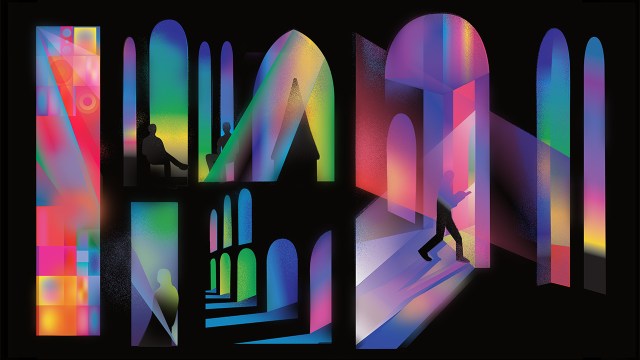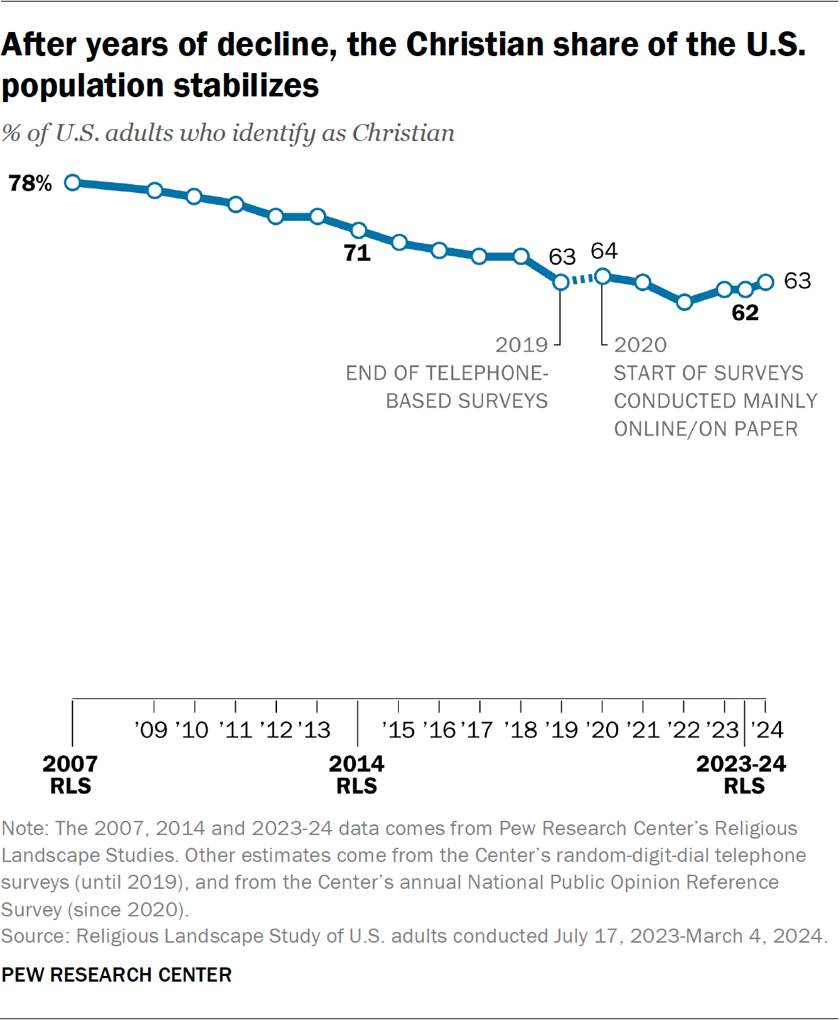Religious Landscape Study
REPORT
FEBRUARY 26, 2025
Decline of Christianity in the U.S. Has Slowed, May Have Leveled Off
Findings from the 2023-24 Religious Landscape Study
BYGREGORY A. SMITH,ALAN COOPERMAN,BECKA A. ALPER,BESHEER MOHAMED,MICHAEL ROTOLO,PATRICIA TEVINGTON,JUSTIN NORTEY,ASTA KALLO,JEFF DIAMANTANDDALIA FAHMY

Illustration by Shawna X
How we did this
After many years of steady decline, the share of Americans who identify as Christians shows signs of leveling off – at least temporarily – at slightly above six-in-ten, according to a massive new Pew Research Center survey of 36,908 U.S. adults.
After many years of steady decline, the share of Americans who identify as Christians shows signs of leveling off – at least temporarily – at slightly above six-in-ten, according to a massive new Pew Research Center survey of 36,908 U.S. adults.

The Religious Landscape Study (RLS) is the largest single survey the Center conducts, aiming to provide authoritative figures on the size of U.S. religious groups because the U.S. census does not collect that information.
We have conducted three of these landscape surveys over the past 17 years, with more than 35,000 randomly sampled respondents each time. That’s enough to paint a statistical portrait of religion not only nationally, but also in all 50 states and the District of Columbia, as well as in 34 large metro areas.
This introductory essay walks through the big-picture trends: evidence both of a long-term decline in American religion and of relative stability in the last few years, since 2020 or so.
Jump to an executive summary of key findings.
Search for data on religious groups.
The first RLS, fielded in 2007, found that 78% of U.S. adults identified as Christians of one sort or another. That number ticked steadily downward in our smaller surveys each year and was pegged at 71% in the second RLS, conducted in 2014.
The latest RLS, fielded over seven months in 2023-24, finds that 62% of U.S. adults identify as Christians. That is a decline of 9 percentage points since 2014 and a 16-point drop since 2007.
But for the last five years, between 2019 and 2024, the Christian share of the adult population has been relatively stable, hovering between 60% and 64%. The 62% figure in the new Religious Landscape Study is smack in the middle of that recent range.
The largest subgroups of Christians in the United States are Protestants – now 40% of U.S. adults – and Catholics, now 19%. People who identify with all other Christian groups (including the Greek and Russian Orthodox Churches, the Church of Jesus Christ of Latter-day Saints, Jehovah’s Witnesses and many others) total about 3% of U.S. adults.
Both Protestant and Catholic numbers are down significantly since 2007, though the Protestant share of the population has remained fairly level since 2019 and the Catholic share has been stable since 2014, with only small fluctuations in our annual surveys.
Meanwhile, the share of Americans who identify with a religion other than Christianity has been trending upward, though it is still in single digits.
No comments:
Post a Comment